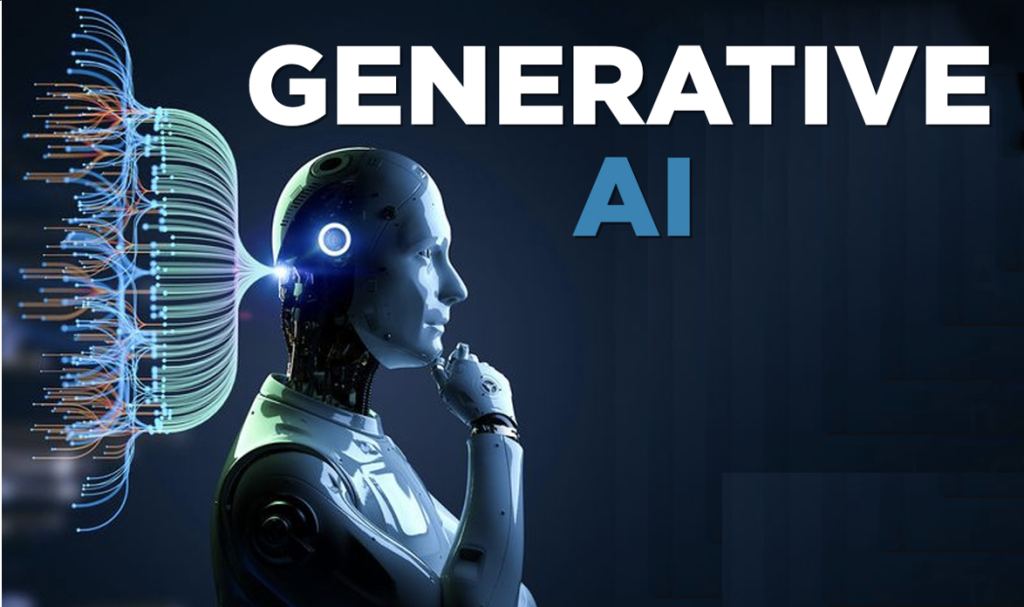Introduction
In recent years, Generative AI has become one of the most talked-about technologies in the world. From creating realistic images and music to writing human-like text, generative AI is revolutionizing industries across the globe. But what does it really mean, and why is it such a big deal in 2025?
If you’ve ever used ChatGPT, seen AI-generated art on platforms like MidJourney, or watched synthetic videos created by tools like Runway Gen-2, then you’ve already witnessed generative AI in action. This beginner-friendly guide explains what generative AI is, how it works, and how it’s being used in everyday life.
What Is Generative AI?
Generative AI is a type of artificial intelligence that can create new content—such as text, images, videos, code, or even music—by learning from existing data.
Unlike traditional AI systems, which are built to analyze data or make predictions, generative AI goes one step further. It uses patterns from massive datasets to generate something entirely new.
Simple Example
- Traditional AI: Predicts what word comes next in a sentence.
- Generative AI: Writes a full paragraph that sounds like it was written by a human.
Some popular examples include:
- ChatGPT – AI text generator (like this article!)
- DALL·E & MidJourney – AI image creators
- Synthesia – AI video presenter platform
- Soundraw – AI music composer
How Generative AI Works
At its core, generative AI relies on machine learning and neural networks. These are algorithms modeled after the human brain’s structure.

Training Data and Patterns
AI models are trained using huge datasets—books, images, videos, audio files—and learn the patterns within that data. For example:
- A text AI reads billions of sentences to learn grammar and context.
- An image AI studies millions of pictures to learn how to combine shapes, colors, and textures.
Neural Networks in Action
One of the biggest breakthroughs came with transformer models (like GPT), which allow AI to generate text or images that are contextually accurate and creative.
In short: Generative AI doesn’t think—it predicts. It creates new outputs based on probabilities learned from past data.
Real-Life Applications of Generative AI in 2025
Generative AI isn’t just a fun experiment—it’s becoming a tool that powers major industries.
Business and Productivity
- Marketing teams use AI to create blog posts, social media ads, and email campaigns.
- Companies build AI chatbots to handle customer service 24/7.
- Startups use AI tools to create business logos, presentations, and pitch decks.
Creative Industries
- Artists use AI image generators like MidJourney to brainstorm concepts.
- Filmmakers use AI to edit and generate special effects at lower costs.
- Musicians compose beats with AI platforms like AIVA.
Education and Learning
- Students use AI for study summaries and essay drafts.
- Teachers use AI to design lesson plans.
- Researchers use AI to speed up data analysis.
Healthcare
- Doctors use AI to generate diagnostic reports.
- Scientists use AI to design new drugs faster than traditional labs.
Benefits and Limitations of Generative AI
Benefits
- Time-Saving: Automates tasks like writing, designing, and coding.
- Cost-Effective: Reduces the need for expensive creative resources.
- Personalization: Creates custom ads, lessons, or recommendations.
- Accessibility: Helps non-experts create professional-level work.
Limitations
- Accuracy Issues: AI sometimes generates incorrect or biased results.
- Copyright Concerns: AI content may unintentionally copy existing work.
- Ethical Risks: Fake news, deepfakes, and misinformation can spread faster.
- Dependence: Over-reliance on AI could reduce critical thinking skills.
Future of Generative AI in 2025 and Beyond
The future of generative AI looks bright but challenging. Experts predict:
- AI Assistants Everywhere: Virtual AI companions for students, workers, and businesses.
- Hyper-Personalization: Ads, learning tools, and entertainment designed uniquely for each person.
- Regulation & Ethics: Governments worldwide are working on AI regulations to ensure safety and fairness.
Generative AI won’t replace humans completely, but it will augment human creativity and productivity in almost every field.
FAQs
What is Generative AI in simple terms?
Generative AI is a type of AI that can create new content—like text, images, or music—based on the patterns it learned from existing data.
Is ChatGPT a form of generative AI?
Yes. ChatGPT is one of the most popular examples of generative AI, designed to create human-like text responses.
What are the benefits of generative AI?
It saves time, lowers costs, and allows anyone to create high-quality content.
What are the risks of generative AI?
Potential issues include misinformation, copyright disputes, and ethical misuse such as deepfakes.
Final Thoughts
Generative AI is more than just a trend—it’s a powerful tool shaping the future of technology and society. From helping businesses scale to empowering students and artists, its influence in 2025 is undeniable.
While there are still risks and limitations, learning to use generative AI responsibly can give you an edge in your career, education, and creative projects.
If you haven’t tried it yet, now’s the time to explore tools like ChatGPT, MidJourney, and DALL·E to see the possibilities of generative AI for yourself.
READ ALSO: Google warns 2.5B Gmail users to update passwords after data databases breach
